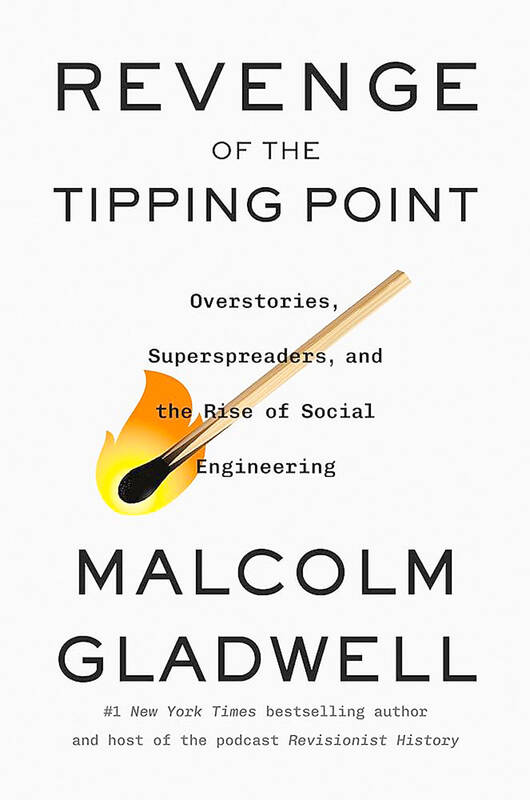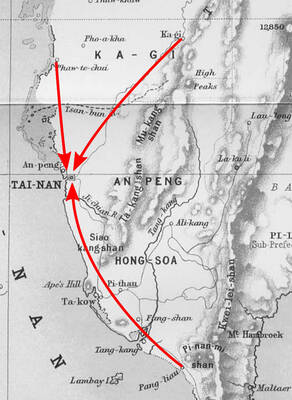It’s almost 25 years since Malcolm Gladwell published The Tipping Point, which sought to understand social phenomena — the drop in crime in New York or the sudden popularity of Hush Puppies shoes — from an epidemiological perspective. Its main thesis was that cultural changes don’t take place as a matter of steady gradualism but instead reach a critical mass that opens the flood gates or enables a trend or product to “go viral.”
The book, his first, itself acted like an infectious virus, as it went on to sell millions around the world. It also helped create a new genre, which mixed science and business and popular culture with counterintuitive theories, a formula repeated by books such as Freakonomics and host of other imitators, and one more or less reused by Gladwell himself in a further six bestselling books.
Now he has returned to that first trendsetter with Revenge of the Tipping Point. Apparently, his initial intention was simply to update the first book, but in the process he realized that he wanted to write a completely new work. The result is an odd and occasionally frustrating confection that takes the (sometimes disputed) conclusions of the original as a given, and then sets off on a self-consciously digressive examination of Miami’s corruption problem, a suicide outbreak at an elite school and the struggle for same-sex marriage, among several other seemingly unrelated subjects.

What was once novel and bracing has hardened over the years into a structural cliche, a storytelling tease designed not just to defer intellectual satisfaction, but to suggest a join-the-dots hidden narrative that will eventually cohere into a revelatory unifying theme. That moment never quite arrives. Along the way there are plenty of interesting facts and thought-provoking ideas but Gladwell introduces them with prose that has evolved (or devolved) from a variation of the middle-highbrow New Yorker house style into something much more folksy and podcast-like. His sentences are littered with phrases such as “Oh my” and “Are you kidding me?” and “You guessed it,” as though his readers are looking for conspiratorial bonhomie, as though, in other words, they are fans.
None of that would matter very much if the book held together as a well-argued thesis, but if it has something new to say beyond what was written a quarter of a century ago, then it’s never made entirely clear. It starts out with a political hearing in which the identities of the participants are concealed, but which obviously concerns Purdue Pharma, the company that triggered the opioid crisis in the US. Sure enough, Gladwell reveals what we already knew in a final chapter that rehashes this well-covered story.
The point he’s seeking to make in the intervening 300 pages is that epidemics — whether opioid, COVID, white flight, or any other kind — all have causes and rules and therefore appropriate measures can be taken. It’s just that he takes an awfully roundabout way of getting there; so roundabout, in fact, that this reader often lost his way. Gladwell seems alive to this danger because he keeps having to summarize “what we’ve learned so far,” and then open sections with sentences such as: “So: Back to the LA survivors club… in the late 1950s.”
That particular switchback concerns the plight of Holocaust survivors relocated to California, and how for three decades after the war they kept their horrific stories to themselves. What changed everything, argues Gladwell, is an American TV miniseries in 1978 called Holocaust that suddenly enabled public discussion of the Nazi genocide three decades before. There’s certainly good evidence that the drama popularized the word “Holocaust,” which helped define the horror and allow it to be discussed. For Gladwell, this meant it changed what he calls the “overstory,” the meta-narrative in which all epidemics — good and bad — unfold.
It’s one of a number of less-than-scientific terms that Gladwell employs as though they were established paradigms. He refers elsewhere in the book to the “Magic Third,” the fraction of a group that is required to effect change, as a “universal law. (Or at least something very close to universal.)” One example he gives is that in a boardroom of nine directors, two women is not a sufficient number to empower effective function in a male-dominated environment. Yet studies show that the addition of a third woman — making a (magic) third of the directors — does lead to female flourishing at board level. What does that mean for minorities? Does every minority need a third of representation in the boardroom to attain best performance? In any case, there is also, Gladwell acknowledges, a Magic Quarter, in which 25 percent is the tipping point for other group dynamics.
And if this universal law is starting to look a bit slippery, then let’s consider the role of superspreaders (in both pathological and cultural epidemics), whom Gladwell discusses at length in a fascinating section on aerosol science. In a British study of 36 people with COVID it was found that 86 percent of all COVID virus particles detected in the group came from just two people. Gladwell calls this the “Law of the Very, Very, Very Few” (in a winking reference to the Law of the Few he outlined in the first book). Exactly how this law is reconciled with the near universal Magic Third or even Magic Quarter is not, as far as I can see, explained. Could it be that different epidemics with different factors behave in different ways?
As there’s some limited evidence to suggest that respiratory virus superspreaders tend to be older and obese, Gladwell asks what actions we would take if this turns out to be true. But despite the “social engineering” in his subtitle, he discreetly concludes: “We will have to decide how far we are willing to go in order to save lives.”
At the end of the book Gladwell reaffirms that epidemics have comprehensible rules and we have the tools to deal with them. The moral issues stemming from how these tools might be utilized remain conspicuously unaddressed.

The Taipei Times last week reported that the rising share of seniors in the population is reshaping the nation’s housing markets. According to data from the Ministry of the Interior, about 850,000 residences were occupied by elderly people in the first quarter, including 655,000 that housed only one resident. H&B Realty chief researcher Jessica Hsu (徐佳馨), quoted in the article, said that there is rising demand for elderly-friendly housing, including units with elevators, barrier-free layouts and proximity to healthcare services. Hsu and others cited in the article highlighted the changing family residential dynamics, as children no longer live with parents,

Oct 20 to Oct 26 After a day of fighting, the Japanese Army’s Second Division was resting when a curious delegation of two Scotsmen and 19 Taiwanese approached their camp. It was Oct. 20, 1895, and the troops had reached Taiye Village (太爺庄) in today’s Hunei District (湖內), Kaohsiung, just 10km away from their final target of Tainan. Led by Presbyterian missionaries Thomas Barclay and Duncan Ferguson, the group informed the Japanese that resistance leader Liu Yung-fu (劉永福) had fled to China the previous night, leaving his Black Flag Army fighters behind and the city in chaos. On behalf of the

I was 10 when I read an article in the local paper about the Air Guitar World Championships, which take place every year in my home town of Oulu, Finland. My parents had helped out at the very first contest back in 1996 — my mum gave out fliers, my dad sorted the music. Since then, national championships have been held all across the world, with the winners assembling in Oulu every summer. At the time, I asked my parents if I could compete. At first they were hesitant; the event was in a bar, and there would be a lot

Smart speakers are a great parenting crutch, whether it be for setting a timer (kids seem to be weirdly obedient to them) or asking Alexa for homework help when the kids put you on the spot. But reader Katie Matthews has hacked the parenting matrix. “I used to have to nag repeatedly to get the kids out of the house,” she says. “Now our Google speaker announces a five-minute warning before we need to leave. They know they have to do their last bits of faffing when they hear that warning. Then the speaker announces, ‘Shoes on, let’s go!’ when